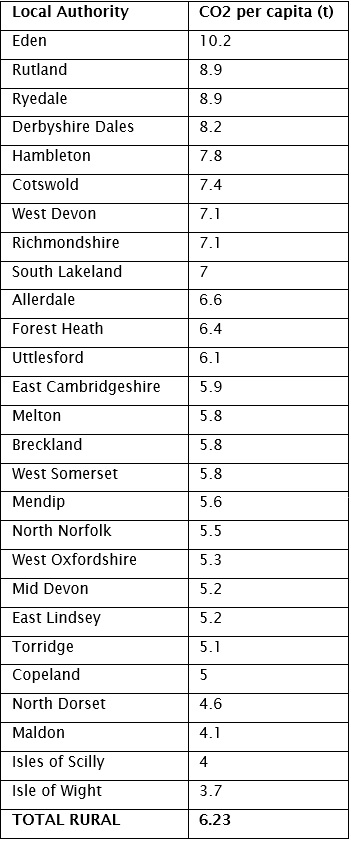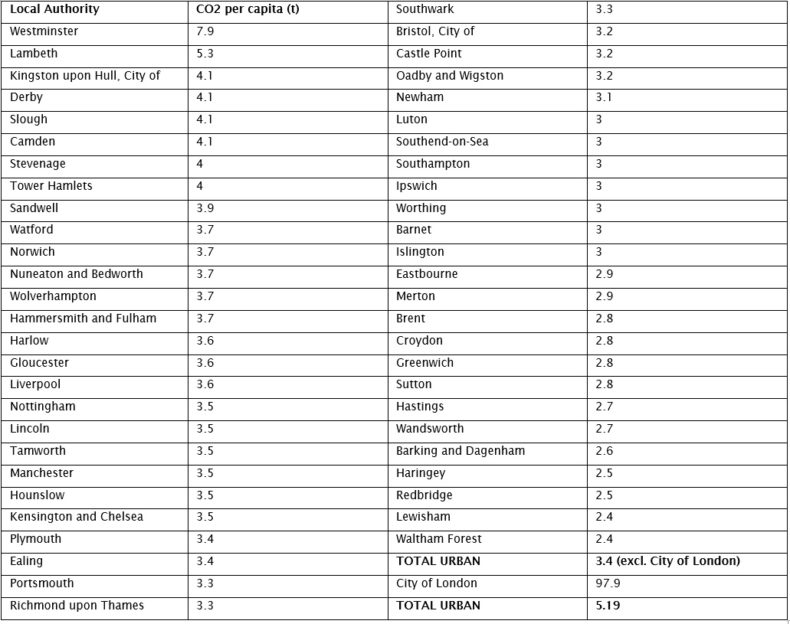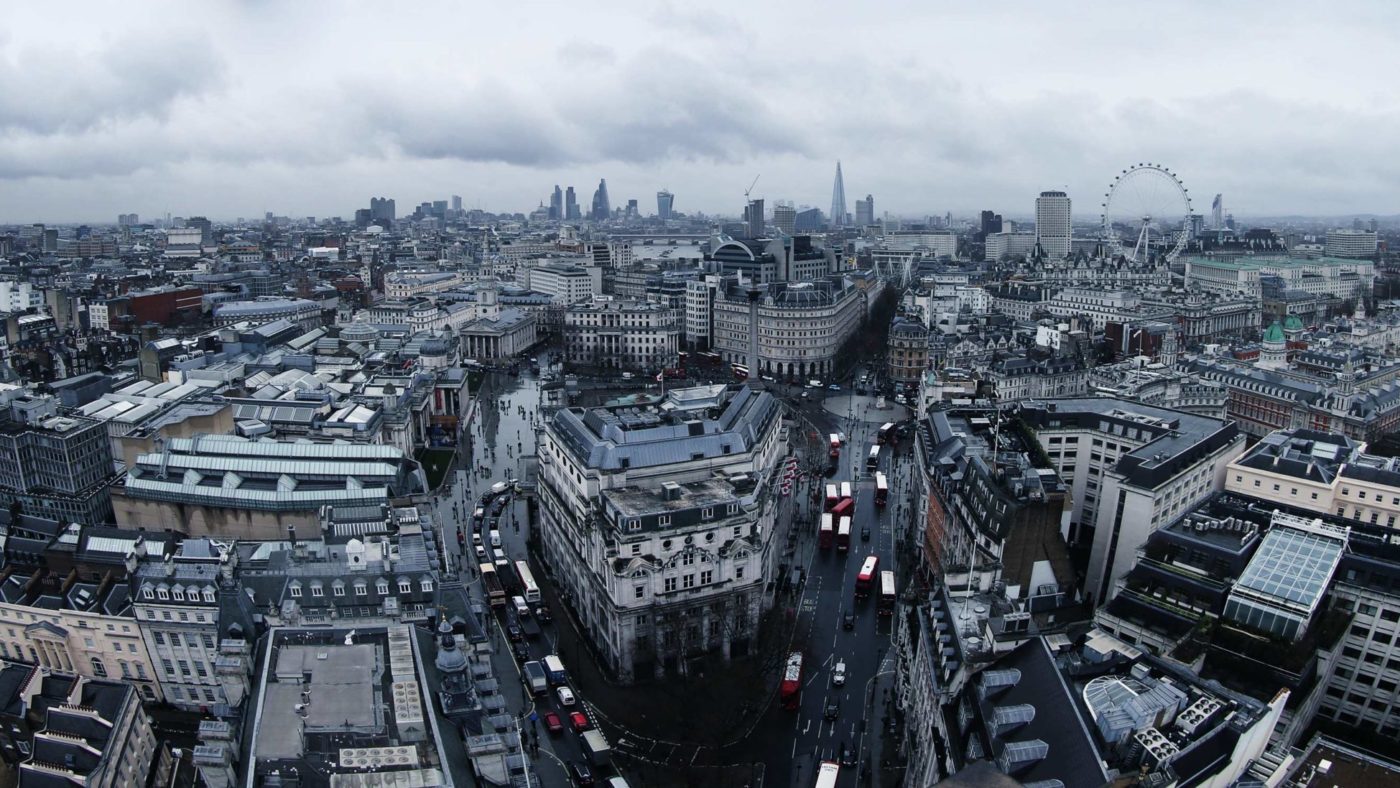Take a quick stroll through a bustling city like London or New York, and you can’t help but feel that such places are the antithesis of environmental sustainability. Yet counterintuitively, large metropolises like these might just be some of the most environmentally friendly places on earth.
Each year, the Department for Business, Energy and Industrial Strategy (BEIS) releases data which show carbon dioxide (CO2) emissions at a local authority level in the UK. And each year, they overwhelmingly show that urban areas typically boast lower CO2-per-capita figures than more rural ones. Indeed, the chart below illustrates exactly this using the latest BEIS figures, which were published last week. Combining them with the most recent census data, one can isolate all local authority areas which have entirely ‘urban’ and entirely ‘rural’ populations, as according to government definitions.


As can be seen, an average rural local authority has CO2 emissions levels of 6.23 tonnes per capita, while an average urban local authority has CO2 emissions levels of just 3.4 tonnes per capita. Indeed, the least carbon intensive rural local authority – Isle of Wight, 3.7 tonnes per capita – would be at the relatively more carbon intensive side of the scale for urban local authorities. (Due to its obvious status as a statistical outlier, City of London has been omitted from the urban average. However, even if it were to be included, the urban average would still be lower than the rural one by over a tonne per capita).
So, what explains the vast difference in emissions outputs between rural and urban areas? In truth, there are myriad different reasons. But the underlying explanation is straightforward: density.
On the face of things, Lewisham, a borough in southeast London, emits far more CO2 (720 kilotonnes) than Eden, a local authority district in Cumbria, in northwest England (536 kilotonnes). Yet, the former spreads those emissions over 301,300 people – while the latter can only do so between 52,800 people. Therein lies the reason why predominantly urban areas, with tightly packed populations, enjoy lower per capita CO2 scores than rural areas, where people are more dispersed.
Two key reasons explain how urban residents are more frugal in their carbon emissions: housing and transport.
Many city dwellers – particularly in the capital – live in multi-storey terraces or apartment blocks. Quite often, they’ll have neighbours in flats above, below, and beside them. This method of housing people economises on carbon intensive resources in construction – when a ceiling can simultaneously act as a floor, for example – and in day to day use – by improving energy efficiency and preventing heat loss. Altogether, carbon emissions are forgone, and space is made available in which to house extra residents to bring down the all-important per capita rating.
Increasing housing density has a powerful knock on effect, which similarly influences carbon emissions. Transport can become far greener in a geographically small city of millions of people, than in an expansive stretch of countryside. Not only do urban residents physically travel fewer miles, but they tend to do so in more sustainable ways.
When the distance from your home to your office might only be a couple of miles, cycling or walking in becomes more feasible. When public transport bosses can be confident of a ready supply of passengers, they may expand services – reducing the need for everybody to own and use polluting petrol and diesel cars. Moreover, because of the economies of scale, large public transport networks become more cost-effective, which is why many capital cities can boast underground rail systems, but remote, rural backwaters may not enjoy so much as an hourly bus service.
Of course, many people want to live in areas with big gardens and access to open space. Nonetheless, we know from a variety of market metrics that house prices and rents in urban areas are rising faster, because supply is not – and cannot – keep up with demand. Therefore, while accepting different people make different choices, we should not be making it any harder than is currently the case to create attractive, well planned, high-density cities for those who enjoy city-dwelling.
The last Labour government tried to increase density through minimum density targets. But more often than not this just squashed housing estates into rural areas, and proved utterly useless. A much more positive way to achieve the same goal is through removing barriers that stop densification, especially in the new context of mass ownership.
Countless regulations exclude most homes other than suburban semi-detached houses, or large apartment blocks. Current rules on overlooking, for example, would prohibit building much of London as it now stands. Mandates on staircase regulations, and disabled lifts in every new four storey townhouse, can be excessive and render building high-density homes – rather than towering apartment blocks – virtually impossible. Rules which outlaw compact living spaces deny a convenient housing solution to those who want it.
Many of the highest density areas in the UK are in sought-after parts of London like Chelsea and Kensington. Attractive building styles should not be confined to such privileged postcodes. Historically, urban areas such as the above were owned by single developers or landlords. This meant that when demand grew, tenants could be moved out en masse, and rebuilding could take place to accommodate for such growth. Yet while ownership trends have fragmented and changed, the rules have remained rigid. Allowing all homeowners to build up by a storey or two, or introducing street-voting on the matter, could be the modernisation Britain’s planning code desperately needs.
Finally, reforming the green belt would be transformational. Contrary to the inane chirping of nimbyist campaigning groups, urbanisation does not entail turning all of Britain into downtown Manhattan. Rather, it means taking a sliver of land and maximising what we can do with it – all the while ensuring that as much genuinely ecologically significant land as possible can be left undisturbed. Releasing as little as 3.7 per cent of London’s green belt could allow for one million new homes to be built, which would massively help in rebalancing the housing market.
If the UK is to meet its new greenhouse gas emissions target – net zero by 2050 – in a way that makes sense, increasing population densities will be critical. The new government needs to take an axe to rules that are holding back urban redevelopment and densification, and put in place new ways to coordinate densification to get there.
CapX depends on the generosity of its readers. If you value what we do, please consider making a donation.


